Is there an easier way to add a data.frame as a "textbox" to a plot? I did it "manually", using function legend.
plot(density(rnorm(1000)), xlab='x', ylab='y', lwd=1, main='Call', col='blue', type='l')
lines(density(rnorm(1000, 0, 2)), lty=3, col='red')
eo1 <- c(rnorm(1), rnorm(1), rnorm(1))
eo1 <- cbind(eo1, c(rnorm(1), rnorm(1), rnorm(1)))
colnames(eo1) <- c('contextA', 'contextB')
legend('topleft', legend=c(paste('medida', paste(colnames(eo1)[1:2], collapse=' '))
, paste('mean ', paste(sprintf('%+.3f', eo1[2, 1:2]), collapse=' '))
, paste('sk ', paste(sprintf('%+.3f', eo1[2, 1:2]), collapse=' '))
, paste('krtE ', paste(sprintf('%+.3f', eo1[3, 1:2]), collapse=' '))
), horiz=F, cex=.7)
I could not see how Extent of boundary of text in R plot could help.
![plot(density(rnorm(1000)),xlab='x',ylab='y',lwd=1,main='Call',col='blue',type='l');
lines(density(rnorm(1000,0,2)),lty=3,col='red')
eo1=cbind(rnorm(1),rnorm(1)); eo1=rbind(eo1,cbind(rnorm(1),rnorm(1)))
eo1=rbind(eo1,cbind(rnorm(1),rnorm(1)))
colnames(eo1)=c('contextA','contextB')
legend('topleft',legend=c(paste('medida',paste(colnames(eo1)[1:2],collapse=' '))
,paste('mean ',paste(sprintf('%+.3f',eo1[2,1:2]),collapse=' '))
,paste('sk ',paste(sprintf('%+.3f',eo1[2,1:2]),collapse=' '))
,paste('krtE ',paste(sprintf('%+.3f',eo1[3,1:2]),collapse=' '))
),horiz=F,cex=.7)](../../images/3817016451.webp)

